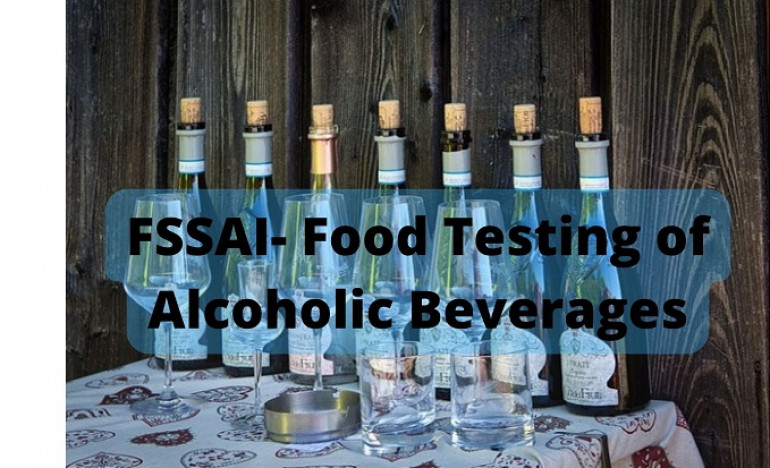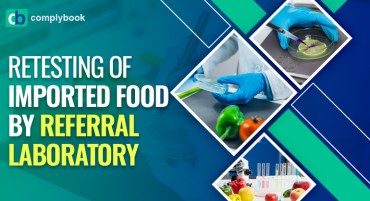

FSSAI- Testing of Alcoholic Beverages
FSSAI- Testing of Alcoholic Beverages
Introduction
Alcoholic beverages is the most growing and evergreen industry which has never seen downfall and still most in demand as everyone is aware that if it is consumed in excess or wrong quantity can cause serious health issues, so the ingredients used in making it must also be taken care of for that purpose testing of these alcoholic beverages is utmost important.
Types of alcoholic beverages as per FSSAI
• Rum
• Gin
• Whiskey
• Brandy
• Beer
• Vodka
• Wine
• Toddy
• Fenny (Cashew & Coconut)
Different types of testing methods prescribed under FSSAI
1. Determination of Ethyl alcohol content:
Ethanol, commonly referred to as ethyl alcohol, is a major component of the wine produced by fermented sugarcane. Wine production is a strictly regulated process and the final commercial product is subject to strict rules regarding alcohol content, acidity, high sulfur dioxide content, sugar content, grape quality, and the number of preservatives.
The two types of method used for determining ethyl alcohol content are:
-? Pyknometer Method
-? Distillation Method
2. Determination of Residue on evaporation:
The presence of alcohol residues or additives (identified or not) may contaminate subsequent production activity in the tools in question. The use of these "no wash" products does not affect the TOC analysis in the context of ensuring cleanliness or monitoring, by producing positive false positive results.
3. Determination of Total acidity (as tartaric acid):
Tarttable acidity (TA) and total acidity are often used interchangeably. The total acid content is defined as the concentration of organic acid in grapes and wine while the TA is the ratio of hydrogen ions used in standard titration to the specified end point.
4. Determination of Volatile acids (as acetic acid):
The amount of alcohol acid is the result of the contribution of fixed or unstable acids such as malic and tartaric as well as those acids separated by steam variability.
5. Determination of Esters:
Ester forms one of the most important classes of organic compounds. They occur widely in the Environment and are closely related to countless modern industries. They are widely used as flavor agents, such as solvents and perfumes.
6. Determination of Higher alcohols:
It is believed that the high content of methanol may be present in some alcoholic beverages produced by traditional distilleries or by other alcohol-producing companies. Because of this, there may be a high risk of methanol contamination in products.
7. Determination of Aldehydes:
A simple and delicate method was described to determine the formaldehyde and acetaldehyde in methanol and ethanol, respectively. The limit of aldehydes in alcohols is a necessary requirement.
8. Determination of Furfural:
Furfuryl alcohol is a living compound that contains furan instead of the hydroxymythyl group. It is a colorless liquid, but older samples appear brown. It has a bad smell of burning and a bitter taste. It is mixed but not stable in water. It dissolves in normal solvents.
9. Determination of Copper:
Levels of copper, zinc, calcium and magnesium are measured by alcoholic beverages (whiskeys, gins, rums, alcohol, brands, wine and beer) and products (non-alcoholic alcohol and vinegar) using flame atomic absorption. spectrometry (FAAS). The mineral concentration was found to be significantly different between the nine alcoholic and non-alcoholic alcohol products studied (p <0.001). In distilled alcoholic beverages, the concentrated concentrations of rums and brandy were statistically lower than those prescribed for gins and alcoholic beverages (p = 0.001). In Cu, the average concentration was statistically different for each of the five groups of tested alcoholic beverages (p <0.001).
10. Determination of Methyl alcohol:
Methanol is the simplest form of alcohol. It is closely related to ethanol, a type of alcohol commonly found in beer, wine and spirits - but it is more toxic. The potential for its presence in home-distilled spirits is a serious health risk.
11. Determination of Sulphur dioxide:
Sulfur dioxide or sulfite contains almost all types of beer. On the other hand, beer occurs as a natural result of fermentation. On the other hand, it is also an agent used as an additive to preserve beer and its unripe ingredients.



